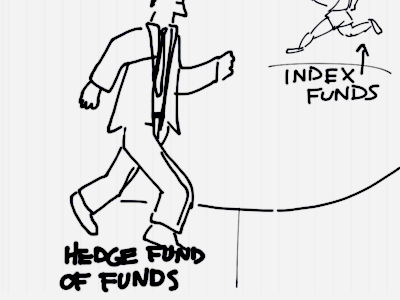Three Simple Index Fund Portfolios
Post on: 30 Май, 2015 No Comment

Follow Comments Following Comments Unfollow Comments
I’m often asked to recommend a simple index fund portfolio for people who are just getting started with passive investing and want to learn the basics. There are several good portfolios you can build to suit your needs using a few funds that require little maintenance. Balanced index funds are also a good option for people who don’t want to do any maintenance.
All the portfolios mentioned in this article are balanced between stocks and bonds. The percentage you should allocate to each asset class depends on your financial goal, time horizon and ability to tolerate market volatility. The more growth you seek the higher allocation you should have to stocks, which leads to a higher volatility of principal.
Simple low-cost portfolios can be formed using open-end index funds or exchange-traded funds (ETFs). There’s only a negligible difference between index funds and ETFs and across providers, so don’t let the decision perplex you. There are many fund companies that offer one or both. Vanguard. Fidelity. Schwab. iShares. SPDR are the largest index product providers. For simplicity, I used all Vanguard ETFs in my examples.
Here are three simple portfolio strategies that offer a great start for new index fund investors. They are broadly diversified, low-cost, and require minimum maintenance, such as rebalancing. See Choices Portfolio in Rebalancing for a discussion on portfolio maintenance.
- The Two Fund Portfolio - the two fund portfolio includes a broadly-diversified U.S. investment-grade bond fund and a global stock market fund. Two Vanguard funds that fit these asset classes are the Total Bond Market ETF (Ticker: BND). which holds U.S. Treasury, agency bonds, home mortgage securities, high quality corporate bonds and a few foreign bond that trade in the U.S. and the Total World Stock ETF (Ticker: VT). which holds stocks from around the globe including U.S. and Canada, Europe and the UK, Asia and Australia and emerging markets. Both funds hold thousands of securities.
- The Three Fund “Lazy” Portfolio – This portfolio divides the equity portion into a U.S. only fund and international only fund, while keeping the broadly-diversified U.S. investment-grade bond fund the same. This strategy allows an investor to control the amount held in U.S. stocks and foreign stocks. This in turn controls the amount of U.S. dollar investment held and non-US dollar investments. Many people prefer to hold mostly U.S. dollar-denominated investments because they have to pay bills in U.S. dollars. The two Vanguard equity ETFs are Total Stock Market ETF (Ticker: VTI) and the Total International Stock ETF (Ticker: VXUS) .
- The Core 4 Portfolio – This portfolio carves out U.S. commercial real estate as a separate asset class. Commercial real estate makes up about 13 percent of the U.S. economy and yet represents only 3 percent of the stock market. This is because most commercial real estate is owned privately rather than securitized as a tradable investment. The Core 4 portfolio extends the three fund portfolio (above paragraph) into real estate by shifting 10 percent of the equity allocation to the Vanguard REIT ETF (Ticker: VNQ) .
Table 1: Fund Allocations for a 60% stock and 40% bond portfolio using Vanguard ETFs
*More lazy portfolio variations are available from the Bogleheads Wiki .
There are many variations to the portfolios list above. The mix between U.S. stocks and international stocks can be changed to suit your preference for dollar exposure. Another option is to swap the total bond market index fund for an investment-grade corporate bond index fund that provides higher yield or a Treasury Inflation Protected (TIPs) fund the provides inflation protection. The possibilities for tailoring these simple portfolios to fit your needs are endless.
There is another simple portfolio option for people who don’t want to maintain their own allocation to asset classes. It’s a single balanced index fund where the allocation to stocks and bonds is held constant by the fund company. Vanguard has many balanced index funds ranging from conservative to aggressive. Target date funds are a different type of balanced index fund where the allocation to stocks is automatically reduced over time.
You really can’t go wrong with any of these simple portfolio choices. I’ve written several books about index fund and ETFs that can help explain these products. The ETF book is a great resource if you’re interested in how exchange-traded funds work, and All About Asset Allocation helps explain how to design an all index fund and ETF portfolio based on your unique situation.
As you gain more experience and accumulate more money, you may decide that a more advanced portfolio suits your needs. At Portfolio Solutions. we build client portfolios that more closely mimic how the economy is composed and slightly away from how the stock market is composed. This provides a risk and return path based on the Fama-French Three-factor model. See The Total Economy Portfolio to learn more about this advanced investment strategy.














